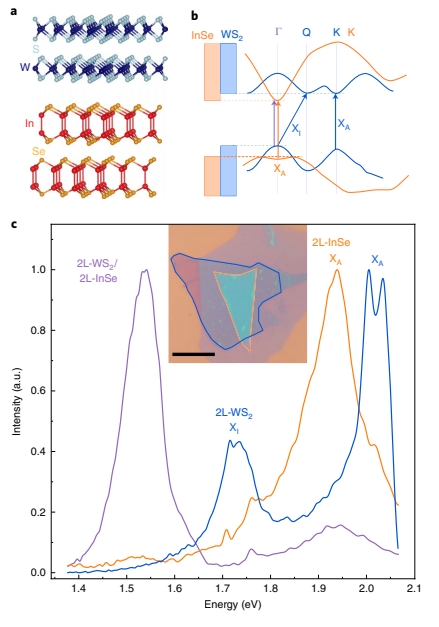Design of van der Waals interfaces for broad-spectrum optoelectronics

Van der Waals (vdW) interfaces based on 2D materials are promising for optoelectronics, as interlayer transitions between different compounds allow tailoring of the spectral response over a broad range. However, issues such as lattice mismatch or a small misalignment of the constituent layers can drastically suppress electron–photon coupling for these interlayer transitions. Here, we engineered type-II interfaces by assembling atomically thin crystals that have the bottom of the conduction band and the top of the valence band at the Γ point, and thus avoid any momentum mismatch. We found that these van der Waals interfaces exhibit radiative optical transitions irrespective of the lattice constant, the rotational and/or translational alignment of the two layers or whether the constituent materials are direct or indirect gap semiconductors. Being robust and of general validity, our results broaden the scope of future optoelectronics device applications based on two-dimensional materials.
Nicolas Ubrig, Evgeniy Ponomarev, Johanna Zultak, Daniil Domaretskiy, Viktor Zólyomi, Daniel Terry, James Howarth, Ignacio Gutiérrez-Lezama, Alexander Zhukov, Zakhar R. Kudrynskyi, Zakhar D. Kovalyuk, Amalia Patané, Takashi Taniguchi, Kenji Watanabe, Roman V. Gorbachev, Vladimir I. Fal’ko and Alberto F. Morpurgo
Nature Materials volume 19, pages 299–304 (2020)